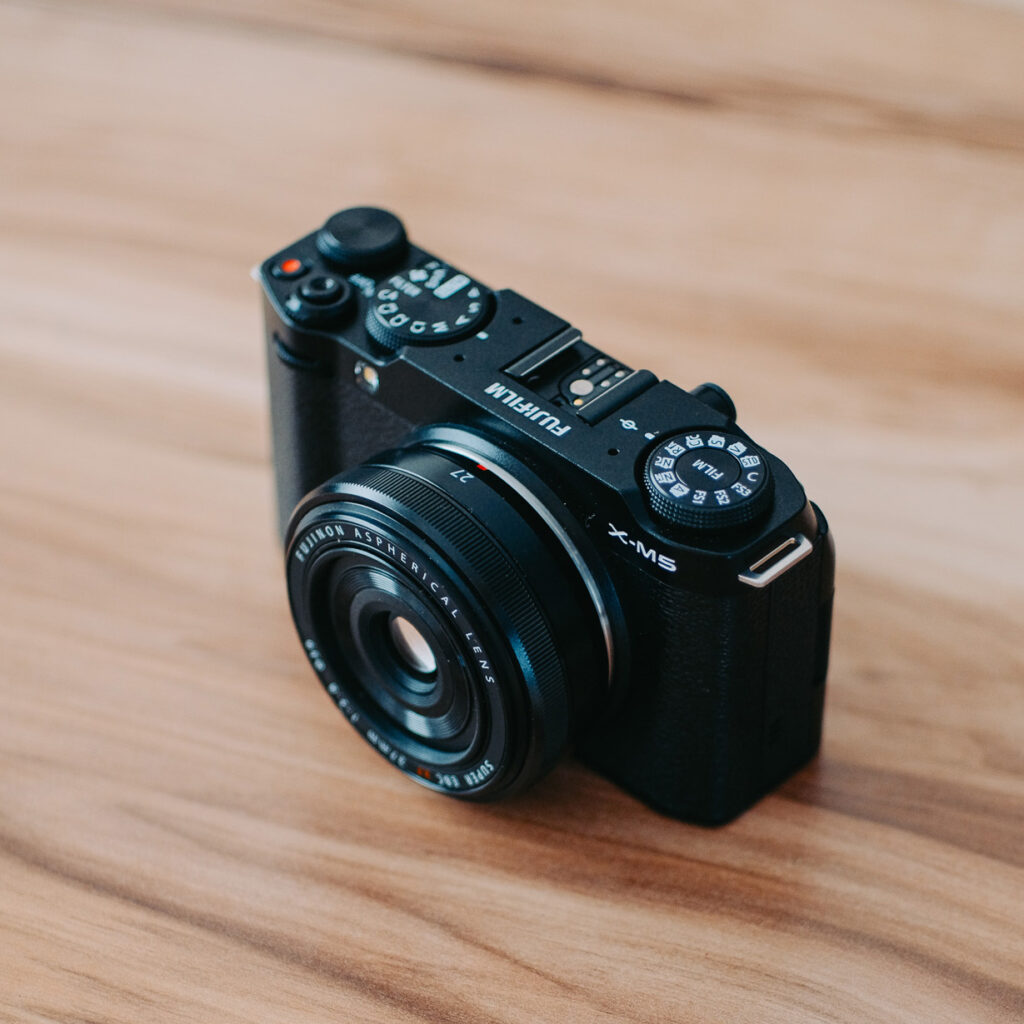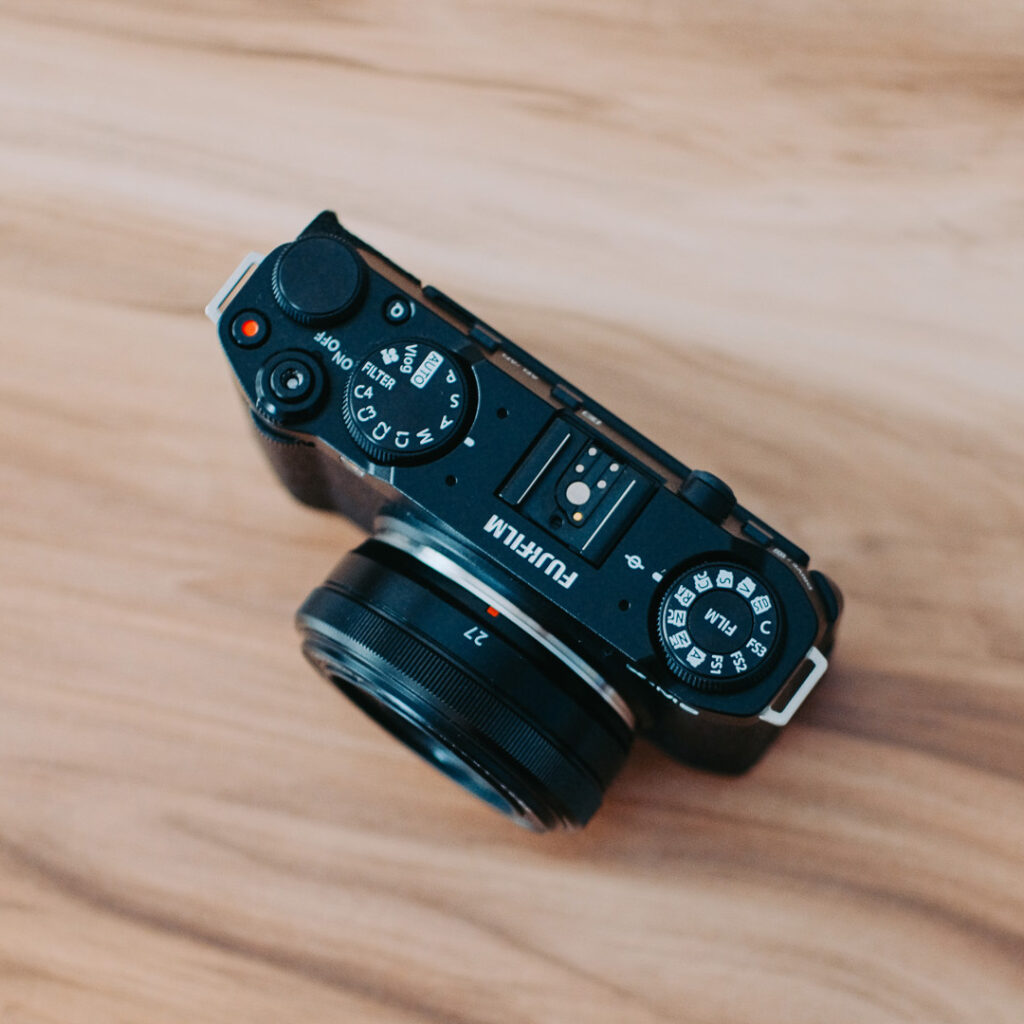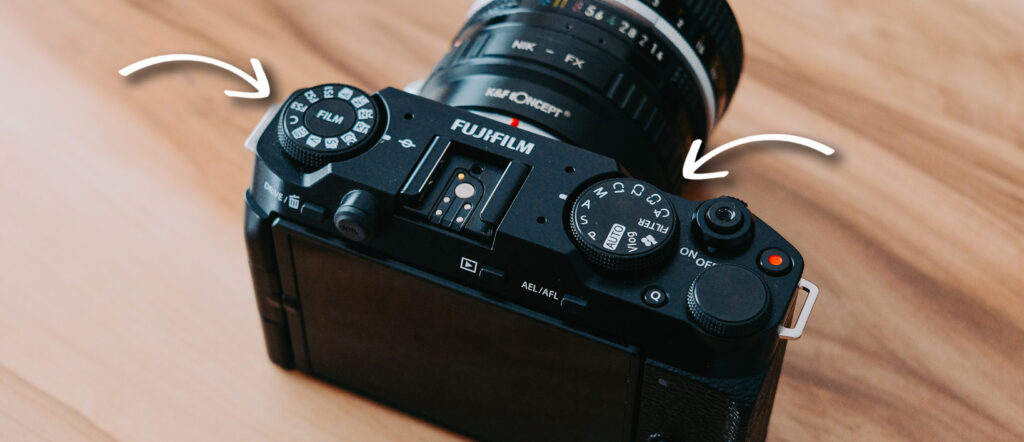Fujifilm X-M5 – Kullanıcı İnceleme Yazısı
Fujifilm’in Kasım 2024’de duyurulan kamerası X-M5’i amatör fotoğrafçı gözünden sizlere anlatayım.
Bu kamera da tüm Fujifilm kameraları gibi önce instagramda önüme düştü.
Bu kamera da tüm Fujifilm kameraları gibi yüksek “HYPE” bir fotoğraf makinesi.
Bu “HYPE” beni de etkiledi.
Odaklandığı özellik; Analog film değiştirir gibi çat/çat/çat film simulasyonları değiştirebiliyorsunuz.
Peki “Hype” ve “Film Değiştirme” özellikleri gerçekten hakkını veriyor mu?



Fujifilm X-M5 Boyutu
Küçük, kompakt. Ufak bir lensle kullanıldığında çok kolay taşınabilen bir fotoğraf makinesi üretmişler. Bu taşıma kolaylığı hemen sempati yaratıyor. Ergonomi konusu ise biraz göreceli. diğer incelemelerde ergonomisiyle ilgili çekincelerini yazanlar olmuş ama bence ergonomisinde pek sorun yok. Elimden hiç kayıp düşmedi. Tuşların yerini bulamadığım da olmadı.


Görüntü Kalitesi
Fujifilm X-M5 çok güzel fotoğraflar çekiyor. Gayet keskin. 26 Megapiksel çok yeterli. Iso duyarlılığı çok iyi. Renkler çok güzel.
Güven veren bir kamera. Yanımda olduğu zaman daha büyük bir Dslr veya Mirrorless bir kameraya mutlaka ihtiyacım var hissine girmiyorum. Önüme ne çıkarsa çıksın; ben ayarlarını düzgün yaptıktan sonra gayet iyi sonuç alabiliyorum. Bilgisayara aktardığımda aldığım sonuçlardan memnun kaldım.
Sonrasında Lightroom’da fotoğraflar üzerinde oynamayı seviyorum. Fujifilm X-M5 Fotoğraflarında bu yönde de bir problem yaşamadım. Lightroom ayarlarında verdiği tepkiler amatör veya giriş seviyesi makineler gibi değil.


Film Simülasyon Modları
Provia – Astia – Velvia – Classic Chrome – Reala Ace – PRO Neg. Hi – PRO Neg. Std – CLASSIC Neg. – Nostalgic Neg. – ETERNA/CINEMA – ETERNA BLEACH BYPASS – Monochrome ve Across gibi isimleri olan bir çok renk kombinasyonu mevcut. Bu film modları diğer Fujifilm kamerlarda menü içerisinden ayarlanabiliyordu. Fujifilm X-M5 ile beraber bu modlara özel bir ayar çarkı koymuşlar.
Bu renk uzayları en basit anlatımıyla Kırmızının nasıl bir kırmızı? Mavinin nasıl bir mavi? Yeşilin nasıl bir yeşil? olacağını etkiliyor.
Gerçekçi olmak gerekirse hepsi de güzel ve kullanışlı değil. Bu renk uzaylarından birisini beğenmediniz diyelim; bu sefer o moddayken “Beyaz ayarı” ile oynayıp yeni şeyler yaratabiliyorsunuz.
Gezi fotoğrafları için kullanacaksanız bu modları sık sık değiştirip yeni şeyler denersiniz. Biraz daha profesyonel bir kullanıcıysanız bu modları ve ayarları kullarak kendinize ait bir kaç “reçete” oluşturursunuz. Bir süre sonra bu modları daha az kullanmaya başlarsınız.
Bu açıdan bakınca amatör/hobi kullanıcıları için Film Simülasyon Çarkı güzel bir özellik. Profesyonel taraftan bakınca; daha sık kullandığınız bir ayar için (Iso veya Enstantane) atanabilir olması daha iyi olurdu.



HYPE KONUSU
Fujifilm bu işi çok iyi yapıyor. Her yeni çıkan makinesinde “BU BENİM OLMALI” diyorsunuz. Mesela hemen bu makineden sonra çıkarttığı Fujifilm X-Half makinesi de çok göz alıcı. Fakat imkan varsa bu makineleri hep denemek gerek. Ben Hype konusunda farklı bir açından bakmak istiyorum.
Eğer “HYPE” olacaksanız Fujifilm’in kendi markasına yükselin. Yaptıkları makineler hep çok iyi. 10 yılda kendilerini inanılmaz noktalara taşıdılar. Ürettikleri sensörler çok iyi. Zaten önce sensörü üretip sonra bu sensörü farklı farklı birbirine benzeyen makinelerle donatıyorlar. Fujifilm X-M5 X-Trans 4 isimli bir sensör kullanıyor. Bu sensörü kullanan bütün makineler aynı fotoğrafı üretiyor. Siz aynı fotoğrafı farklı makinelerle çekebiliyorsunuz sadece makine donanımını seçiyorsunuz gibi düşünün.
Fujifilm’in çok satan X100V makinesine yükseldinizse eğer; Fujifilm XE-4 de Fujifilm X-M5 de aynı sensöre sahip. Hepsine birden sahip olmanız gerekmiyor. Sizi yüzbinlerce liradan kurtardım hadi iyisiniz :).
Beğenmediğim Özellikler
Bu kameranın fotoğraflarını ve renklerini çok sevdiğim halde satın alır mıydım?
Hayır almazdım. Nedeni tamamen benim kullanım alışkanlıklarımla alakalı.
Herşeyden önce vizör yok.
Vizörden bakmaya çok alışmışım. Habire makineyi suratıma götürüp vizörden bakmaya çalışıyorum. Bu haliyle arka ekrandan çekerken cep telefonuyla çekiyormuşum hissine giriyorum ve fotoğrafa gereken özeni vermiyorum. Vizörden bakarken kompozisyona ve pozlamaya daha çok dikkat ediyorum. Bu yüzden X-M5 bana “fotoğrafçı” hissini vermediğinden dolayı tercih etmezdim.

Üzerindeki tuş kombinasyonları benim kullanımıma uygun değil.
Film simülasyonları yerine enstantane seçebilseydim; fotoğraf çekerken daha hızlı ayar yapabilirdim. Diğer ayar çarkından bahsetmek gerekirse A – S – M – P modları seçebilmek yerine yine pozlama veya enstantane seçebilmeyi isterdim. Fotoğraf çekerken genellikle yüzlerce ayar değiştirmiyorum. Sahneye göre belli bir diyafram aralığında veya günün saatine göre belli bir enstantanede sabit ayarda kalmak konuya daha iyi odaklanmamı sağlıyor. Bu makinede ise ilk dslr aldığım günleri hatırladım. Makine ayarlarına fazlaca kendimi bırakmam gerekiyor.

Ama makineyi suçlayacak değilim. Bence zaten hedef kitlesinin içerisine girmiyorum. Oysa bunu Gezi – Vlog çekimlerinde kullanan daha yeni nesil (ekrandan ayar yapmaya alışmış) bir kullanıcı olsam bana hitap edebilirdi.
Ben şimdi ne anlattım?
Zannedersem Fujifilm X-M5 çok iyi makine diyebildim. Fotoğraf kalitesini övdüm. Size göre olduğunu düşünüyorsanız çekinmeden alabilirsiniz dedim. Öte yandan belki benzer kullanım alışkanlıklarımız da vardır diye “Bana neden hitap etmedi?” kısmını anlattım. Sevgiler.
Satın almak isterseniz :
https://fujifilmshop.com/katalog/bul/?&urunadi=x-m5
Diğer İncelemeler için : https://ciyuportfolio.com/notlar/
Leave a Reply